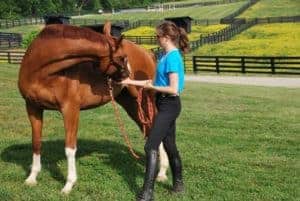
Prehabilitation for Horses Before Surgery
Your horse’s recovery from surgery should start long before heading to the OR. Read more in this article from the Fall 2023 issue of The Horse.

Your horse’s recovery from surgery should start long before heading to the OR. Read more in this article from the Fall 2023 issue of The Horse.

Modalities ranging from PEMF to vibration plates might help manage equine injury or improve performance.

Any horse can benefit from rehabilitation during their lifetime.

Discover how therapeutic exercise programs can help keep horses feeling their best.

What can an owner do to control a horse’s foot pain? We turned to two equine veterinarians that spend a lot of time managing horses’ feet to find out.

A physical therapist and veterinarian discuss potential applications of blood-flow-restriction training, compression therapy, and more in horses.

An expert lists four broad PT categories and describes the many techniques within each that can help horses recover from injury and improve their performance.

Biomechanics expert: The wrong rehab program for a horse can be counterproductive.

Seven measurement tools and methods veterinarians can implement into equine rehabilitation programs to track progress.

Taking a horse from a sedentary state to active working fitness can be a form of rehabilitation. However, there’s no one-size-fits-all program. Learn how to safely transition your horse into an exercise program.

Horse health care often requires teamwork. Use these tips to find the right equine health professionals for your team.

What therapies might help relieve the rest of a horse’s body when treating a specific injury or recovering from surgery?

An FEI veterinarian and her on-staff equine sports therapist join us to answer your questions about keeping your equine athlete performing at his best.

Here’s how to get your performance horse back to the show ring safely and successfully after layup.

Rehabilitating and reconditioning injured or out-of-shape horses can be daunting, but don’t worry ? we’re here to help.

Veterinarians use equine rehabilitation to restore the normal function following injury while reducing clinical signs and restoring range of motion.
Stay on top of the most recent Horse Health news with
© 2022 Copyright Statement dolor sit amet, consetetur sadipscing User Terms, sed diam nonumy eirmod tempor invidunt ut labore et dolore magna aliquyam erat, sed diam voluptua. At vero eos et accusam et justo duo dolores et ea rebum. Stet clita kasd gubergren, no sea takimata sanctus est Lorem ipsum dolor sit amet.
"*" indicates required fields